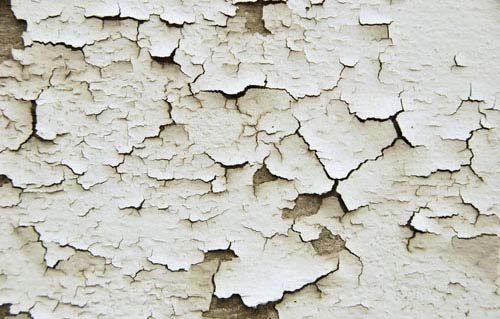Parylene and A-174 Silane
Posted by Sean Horn
Friday, January 15, 2016 7:41
@ 7:41 AM
Improving Parylene Adhesion
Parylene provides an entirely conformal, durable, pinhole-free substrate coating of extreme utility for an exceptional range of materials, products and purposes. Despite its many advantages, parylene’s chemical structure can actually interfere with the reliable interface adhesion required for optimal performance. The chemical vapor deposition (CVD) process that generates so many of parylene’s benefits also nullifies chemically-based substrate adhesion; only mechanical adhesion is possible.

Implementing optimal adhesion can require surface modification via application of adhesion promoting agents or methods. The materials and processes used for these purposes are largely dependent on the substrate surface and component’s specific operational environments and functions. Although most adhesion promotion methods are used prior to CVD, several can be integrated into the coating-process itself, Among the methods of adhesion promotion used with parylene are:
- Thorough surface-cleaning, which stimulates enhanced adhesion by eliminating accumulated substrate contaminants whose presence can diminish overall coating quality.
- Heat-treating. for three hours at temperatures of 140°C, beneficially activates longer-term adhesion and insulation.
- Active, wired devices profit from bilayer component-encapsulation processes.
While these techniques have their uses for parylene adhesion promotion, the chemical monolayer Silane A-174 (3-Methacryloxypropyltrimethoxysilane – C10H20O5Si) is used most frequently to modify substrate surfaces and improve parylene adhesion.
The Uses of Silane A-174
Silane A-174’s value as an adhesion promoting agent stems largely from its versatility. It can be successfully applied to substrate materials like elastomer, glass, metal, paper, plastic or quartz, among a wide range of surface substances. The A-174 silane molecule develops a robust chemical bond with the substrate, facilitating the improved surface adhesion capacity of parylene’s mechanical property. Optimal parylene adhesion is commonly achieved by a treatment with A-174 silane prior to initiating the CVD process. However, regarding appropriate procedural scheduling:
- it is recommended that A-174’s application be completed after any necessary masking operations have been finished;
- depending on substrate materials, manual spray, soaking, or vapor phase silane processing techniques may be used to apply A-174.
Process Balance
While the silane promotes adhesion, the parylene assures protection. Thus, appropriately proportional intermixtures of silane A-174 and parylene need to be used, in all cases. Corrosion-resistance can be diminished where the relationship between parylene and silane is inexact, causing part and function deterioration from both beneath- and external to the conformal covering. This is especially the case with medical implants, where reliable component function is mandatory, despite being subjected to persistent exposure to often harsh bodily fluids.
Of the two basic methods for applying silane A-174 to substrates, the first, in-chamber vapor delivery, is somewhat easier to enact but offers significantly diminished coating outcomes. Silane vapor promotion is impossible to efficiently supervise during real time, causing a proportional loss of effective process monitoring. As a consequence:
- the potential of operator error increases,
- leading to a far greater incidence of insufficient or excessive silane promotion;
- imperfect silane surface-conformity frequently develops under these conditions,
- stimulating degraded parylene coverage during the subsequent deposition cycle.
Thus, the problems inherent in achieving inappropriate production-intermixture alluded to above are more likely to occur, adding to production downtime and expense, as well as customer dissatisfaction.
The wet application method of silane application further allows inspection and monitoring of the immersion-solution throughout the process. Following silane A-174 immersion, CVD processes for parylene application should be implemented within 30 hours.
Mixing only the quantity of silane required for the procedure at hand is recommended, to assure appropriate preparation/application and safe work conditions, Silane’s 24-hour shelf-life precludes storage of any excess, which should be discarded immediately in a solvent sink, subsequently drained, then rinsed with IPA. At all times, avoid breathing the solution’s vapors or causing contact with skin or eyes.
Conclusion
Improving substrate adhesion is necessary because parylene will peel-off some substrates, if not appropriately treated with silane A-174. Immersion methods of application provide the most reliable solution.
Why Choose Diamond-MT as Your Parylene Coating Provider
At Diamond-MT, we are industry-leading parylene experts. We offer parylene and conformal coating services for all industries, including defense, electronics, and medical applications. Contact us today at 1-814-535-3505 to learn more and discuss your next project with our team of experts.
Comments
Homepage 4/17/2020. 10:17:10 AM
... [Trackback] [...] Informations on that Topic: blog.paryleneconformalcoating.com/whats-the-difference-between-potting-and-conformal-coating/ [...]

londondrugscanada.bigcartel.comlondon-drugs 4/17/2020. 10:17:10 AM
cialis uk https://londondrugscanada.bigcartel.com/london-drugs This is nicely expressed. !